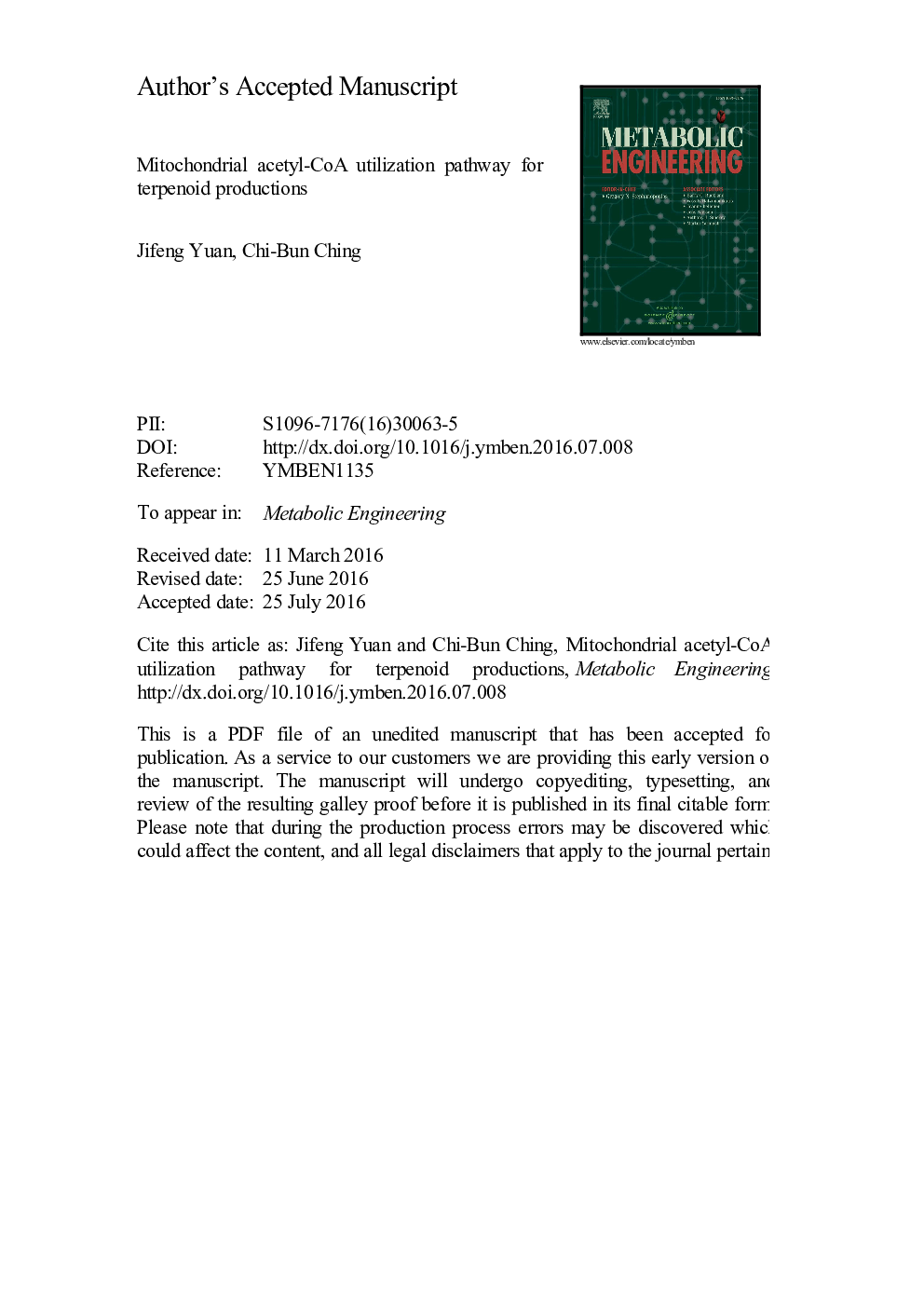| Article ID | Journal | Published Year | Pages | File Type |
|---|---|---|---|---|
| 6494206 | Metabolic Engineering | 2016 | 29 Pages |
Abstract
Acetyl-CoA is a central molecule in the metabolism of the cell, which is also a precursor molecule to a variety of value-added products such as terpenoids and fatty acid derived molecules. Considering subcellular compartmentalization of metabolic pathways allows higher concentrations of enzymes, substrates and intermediates, and bypasses competing pathways, mitochondrion-compartmentalized acetyl-CoA utilization pathways might offer better pathway activities with improved product yields. As a proof-of-concept, we sought to explore a mitochondrial farnesyl pyrophosphate (FPP) biosynthetic pathway for the biosynthesis of amorpha-4,11-diene in budding yeast. In the present study, the eight-gene FPP biosynthetic pathway was successfully expressed inside yeast mitochondria to enable high-level amorpha-4,11-diene production. In addition, we also found the mitochondrial compartment serves as a partial barrier for the translocation of FPP from mitochondria into the cytosol, which would potentially allow minimized loss of FPP to cytosolic competing pathways. To our best knowledge, this is the first report to harness yeast mitochondria for terpenoid productions from the mitochondrial acetyl-CoA pool. We envision subcellular metabolic engineering might also be employed for an efficient production of other bio-products from the mitochondrial acetyl-CoA in other eukaryotic organisms.
Related Topics
Physical Sciences and Engineering
Chemical Engineering
Bioengineering
Authors
Jifeng Yuan, Chi-Bun Ching,
